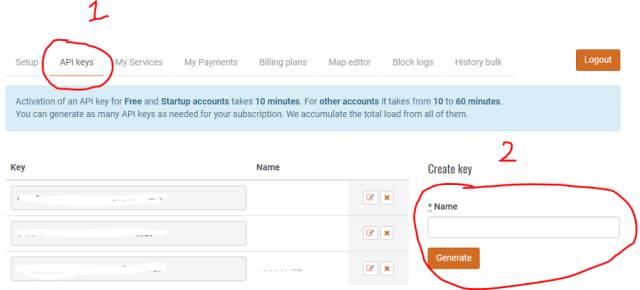用 Node.js 的 16 行代码创建一个简单的天气 App
Posted 前端先锋
tags:
篇首语:本文由小常识网(cha138.com)小编为大家整理,主要介绍了用 Node.js 的 16 行代码创建一个简单的天气 App相关的知识,希望对你有一定的参考价值。
仅15分钟学会使用 API 调用并建立一个命令行天气应用程序。
本教程的范围

欢迎!这是多篇教程中的第一篇文章!
在本教程中,您将学习如何调
用 OpenWeatherMap.org API 并把结果输出到控制台。
- 20 秒快速注册 OpenWeatherMap.org 账户。
- Node.js : 如果没有安装 Node,请到官网 Node.js website 下载并安装。如果这样的项目你感兴趣并且你也在寻找 Node 更深入的教程请查看另一篇文章 Top Three Node.js courses
第一步:OpenWeatherMap

当你想玩玩 API ,OpenWeatherMap 是一个不错的地方。实际上有关于天气的11种不同的api供您访问。
对于这个项目我们将使用免费的 Current Weather API, 点击此处注册账号。
登陆之后, 点击 API keys, 在页面的右侧你可以创建一个 key,输入一个名称(任何)并选择生成。在页面左侧可以看到生成的 API Key。

太棒了,现在我们有API密匙,可以开始创建我们的应用程序。
第二步:Setting up the project

1. 创建 node-weather 文件夹然后执行:
npm init
2. 填写所需的信息来初始化我们的项目
以下是我的 package.json 文件初始化后的样子。
注意:你本地的跟我的看起来略有不同,没关系。
{
"name": "simple-nodejs-weather-app",
"version": "1.0.0",
"description": "",
"main": "index.js",
"scripts": {
"test": "echo \"Error: no test specified\" && exit 1"
},
"repository": {
"type": "git",
"url": "git+https://github.com/bmorelli25/simple-nodejs-weather-app.git"
},
"author": "brandon morelli",
"license": "ISC",
"bugs": {
"url": "https://github.com/bmorelli25/simple-nodejs-weather-app/issues"
},
"homepage": "https://github.com/bmorelli25/simple-nodejs-weather-app#readme",
"dependencies": {
}
}
3. 创建 index.js 文件,此文件将包含应用程序的代码。
Making the API call

API调用,我们将使用一个受欢迎的npm模块 request 调用。 request 已经有数以百万的下载,是一个简化 http 请求的模块。
npm install request --save
就像我说的, request 很容易使用。我们只需要传惨 url,request 返回一个回调函数。
const request = require('request');
request(url, function (err, response, body) {
if(err){
console.log('error:', error);
} else {
console.log('body:', body);
}
});
让我们分解这个代码
1. 引入 request 包
2. 传 url ,request 返回一个回调函数,其中参数为 err 、 response 、body
3. 在请求中检查错误, 如果有 error ,输出到控制台
4. 如果没有 error, 将 body 输出。
太棒啦,不过 url 是什么呢?
通过阅读OpenWeatherMap(https://openweathermap.org/current) 文档,能够确定 url 是什么。http://api.openweathermap.org/data/2.5/weather 需要两个必须的参数。已键值对形式通过 url 传递城市以及 API Key 。
let apiKey = '****************************';
let city = 'portland';
let url = `http://api.openweathermap.org/data/2.5/weather?q=${city}&appid=${apiKey}`
上述代码做了3件事
1. 声明变量 apiKey 存放 API Key
2. 声明变量 city 存放城市。
代码整合后如下:
let request = require('request');
let apiKey = '*****************************';
let city = 'portland';
let url = `http://api.openweathermap.org/data/2.5/weather?q=${city}&appid=${apiKey}`
request(url, function (err, response, body) {
if(err){
console.log('error:', error);
} else {
console.log('body:', body);
}
});
控制台输入运行代码:
node index.js
// the following is returned:
body: {"coord":{"lon":-122.68,"lat":45.52},"weather": [{"id":801,"main":"Clouds","description":"few clouds","icon":"02d"}],"base":"stations","main":{"temp":302.15,"pressure":1014,"humidity":51,"temp_min":301.15,"temp_max":303.15},"visibility":16093,"wind":{"speed":2.6,"deg":320},"clouds":{"all":20},"dt":1497905580,"sys":{"type":1,"id":2274,"message":0.0042,"country":"US","sunrise":1497874905,"sunset":1497931383},"id":5746545,"name":"Portland","cod":200}
我们成功的请求了 OpenWeatherMap’s API 并返回了数据。数据里有好多信息,比如 温度、湿度、风速等等
重要提示:你永远不会像这样在你的代码中公开你的API密钥。为了简洁起见,我像这样把它放在公开的地方。在以后的教程中,我将向您展示如何使用环境变量隐藏 API 。现在,只需要知道像这样公开 API 密钥是不标准的。
整理返回数据

这个应用程序还不能用。返回的数据混乱杂乱令人讨厌。让我们把整理下。
我们需要做的第一件事是将返回字符串 json 转换成 javascript 对象。
我们用以下代码转换:
let weather = JSON.parse(body)
现在我们有了 JavaScript 对象,我们可以用点或括号符号来访问对象中的数据。下面,我们通过访问天气对象中的数据构造消息字符串。
let message = `It's ${weather.main.temp} degrees in${weather.name}!`;
console.log(message);
执行程序,输出如下:
node index.js
// It's 300.4 degrees in Portland
稍等。程序没有错,OpenWeatherMap 默认返回 Kelvin 温度。如果需要华氏温度添加参数 units=imperial。
执行代码:
node index.js
// It's 70.1 degrees in Portland
修改后代码如下:
let request = require('request');
let apiKey = '***********************************';
let city = 'portland';
let url = `http://api.openweathermap.org/data/2.5/weather?q=${city}&units=imperial&appid=${apiKey}`
request(url, function (err, response, body) {
if(err){
console.log('error:', error);
} else {
let weather = JSON.parse(body)
let message = `It's ${weather.main.temp} degrees in ${weather.name}!`;
console.log(message);
}
});
添加交互性
我们的应用程序仍然很无聊。我们只能访问波特兰俄勒冈的天气。让我们添加一些互动。为此,我们将使用yargs(https://www.npmjs.com/package/yargs)。 Yargs是交互式命令行接口工具。或者更简单地说,它允许我们从命令行定义变量。
安装 yargs :
npm install yargs --save
yargs 将控制台输入的变量放在 argv 对象里。我们设置和访问这个对象如下:
const argv = require('yargs').argv;
我们将使用 c 表示城市:
修改 city 变量为 argv.c 。如果没有输入变量,默认为 Portland 。如下:
let city = argv.c || 'portland';
运行程序:
node index.js
我们需要传递一个名为 c 的变量,如下所示
node index.js -c Boston
// It's 85 degrees in Boston
我们使用一个标志表示传递的变量。因为我们将变量设置为字母 c,所以我们用 c 传递变量。c 后面可以跟任何我们想要的城市名称!
node index.js -c Anchorage
// It's 47 degrees in Anchorage
在这一点上,我们的代码入下:
const request = require('request');
const argv = require('yargs').argv;
let apiKey = '*****************************';
let city = argv.c || 'portland';
let url = `http://api.openweathermap.org/data/2.5/weather?q=${city}&units=imperial&appid=${apiKey}`
request(url, function (err, response, body) {
if(err){
console.log('error:', error);
} else {
let weather = JSON.parse(body)
let message = `It's ${weather.main.temp} degrees in ${weather.name}!`;
console.log(message);
}
});
你做到了!
| 往期精选文章 |
|---|
小手一抖,资料全有。长按二维码关注京程一灯,阅读更多技术文章和业界动态。
以上是关于用 Node.js 的 16 行代码创建一个简单的天气 App的主要内容,如果未能解决你的问题,请参考以下文章